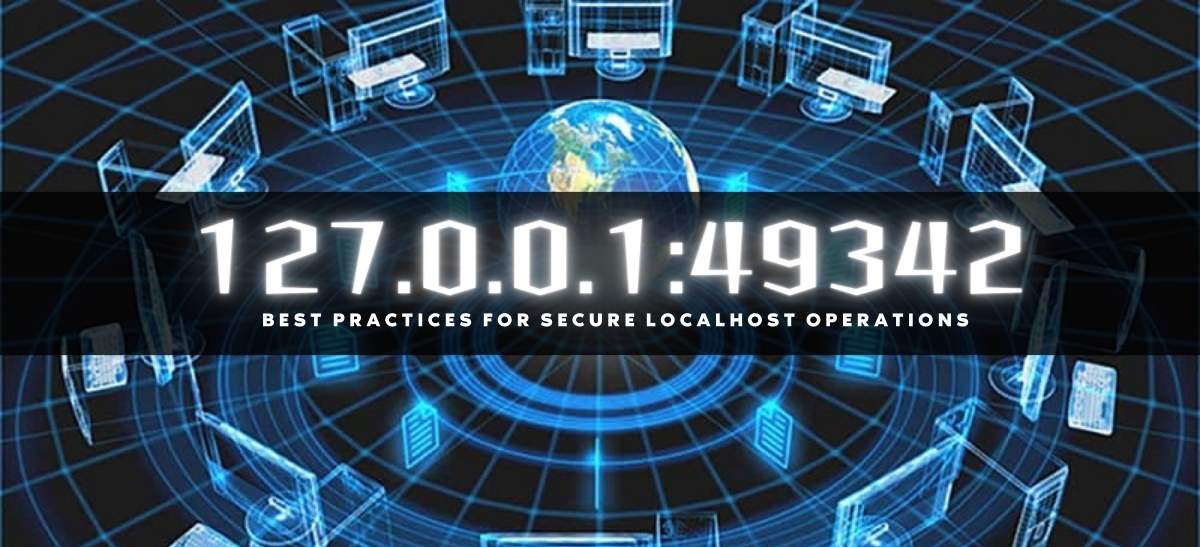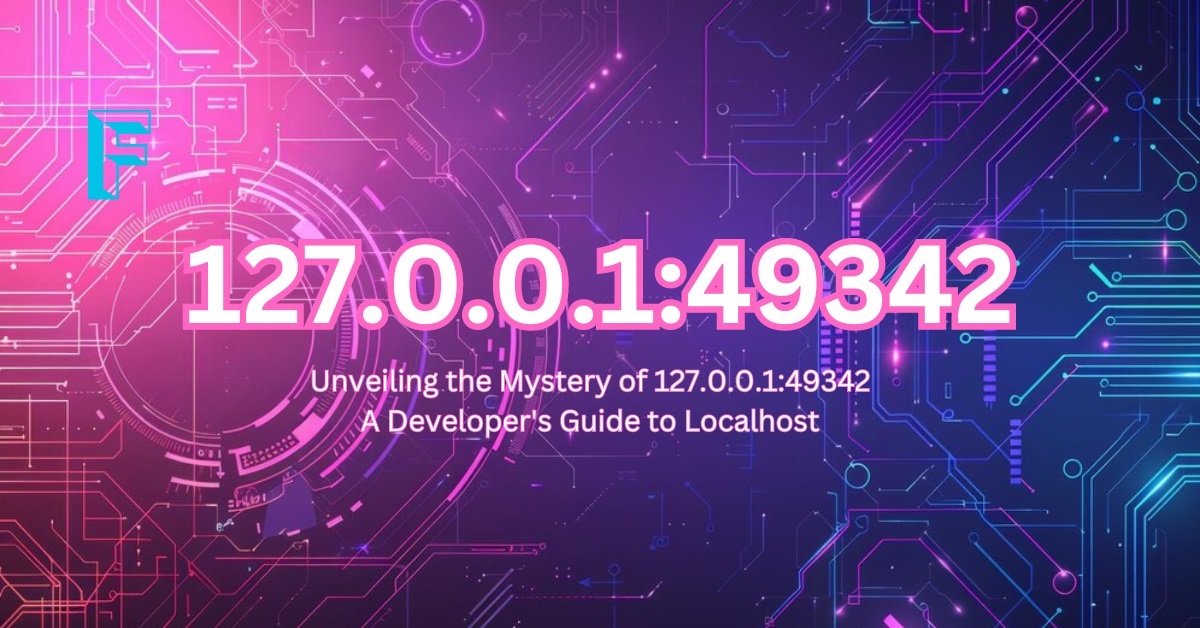Introduction to 127.0.0.1:49342
As an experienced human writer, I’m excited to dive into the fascinating world of 127.0.0.1:49342 and share my insights with you. This networking concept has long been shrouded in mystery, but with this comprehensive guide, I aim to shed light on its significance and provide you with a deeper understanding of its inner workings.
In today’s digital landscape, where technology is woven into the fabric of our daily lives, it’s essential to grasp the fundamental principles that govern the networks we rely on. 127.0.0.1:49342 is one such principle, and mastering its intricacies can unlock a world of possibilities for developers, network administrators, and tech-savvy individuals alike.
What does 127.0.0.1:49342 mean?
At its core, 127.0.0.1:49342 is a combination of an IP address and a port number. The IP address, 127.0.0.1, is a special address known as the “loopback address” or “localhost.” It’s a reserved IP address that allows a computer to communicate with itself, effectively creating a closed-loop network connection.
The port number, 49342, is a unique identifier that specifies the specific application or service that the computer is trying to access or communicate with. This combination of an IP address and a port number is commonly referred to as a “network endpoint” or a “network socket.”
The significance of 127.0.0.1:49342 in networking
127.0.0.1:49342 plays a crucial role in the world of networking, serving as a fundamental building block for various applications and systems. It’s the go-to address for developers and network administrators when they need to test, debug, or interact with software running on the same machine.
By utilizing 127.0.0.1:49342, developers can quickly and easily test their applications without the need for a separate server or remote machine. This allows them to identify and address issues quickly, streamlining the development process and ensuring the reliability of their software.
Moreover, 127.0.0.1:49342 is often used in network troubleshooting scenarios, where it helps isolate network-related problems and determine whether the issue lies within the local machine or the broader network infrastructure.
Understanding the different components of 127.0.0.1:49342
To fully comprehend 127.0.0.1:49342, it’s essential to break down its individual components and understand their respective roles:
- IP Address (127.0.0.1): The IP address 127.0.0.1 is a special, reserved address that represents the local machine or computer. It’s a loopback address, meaning that any network traffic sent to this address will be directed back to the same machine, rather than being routed to a remote destination.
- Port Number (49342): The port number, in this case, 49342, is a unique identifier that specifies the specific application or service that the computer is trying to access or communicate with. Ports are used to establish and manage network connections, with each port serving a specific purpose.
Together, the IP address and port number form a network endpoint, or a network socket, that allows applications and services to communicate with each other in a standardized and efficient manner.
How does 127.0.0.1:49342 work?
When a computer or application needs to communicate with itself, it can use the 127.0.0.1:49342 address. This process works as follows:
- The application or service generates a network request, specifying the 127.0.0.1:49342 address as the destination.
- The computer’s network stack, which is responsible for managing network communication, recognizes the 127.0.0.1 address as a loopback address.
- Instead of sending the request out to the broader network, the network stack redirects the traffic back to the same machine, effectively creating a closed-loop connection.
- The application or service running on the local machine receives the request and can then process it accordingly.
This loopback mechanism allows for efficient and reliable communication within a single computer, without the need for external network resources or infrastructure.
Practical applications of 127.0.0.1:49342
The versatility of 127.0.0.1:49342 is reflected in its wide range of practical applications:
- Software Development: As mentioned earlier, developers extensively use 127.0.0.1:49342 to test and debug their applications, ensuring that they function correctly before deploying them to a production environment.
- Network Troubleshooting: Network administrators often employ 127.0.0.1:49342 to isolate and identify network-related issues, such as connectivity problems or application malfunctions, by testing the local machine’s network capabilities.
- Web Server Testing: When setting up a local web server for development or testing purposes, 127.0.0.1:49342 is commonly used to access the server and verify its functionality without the need for a public-facing IP address.
- Database Connections: Many database management systems, such as MySQL or PostgreSQL, use 127.0.0.1:49342 as the default address for local database connections, allowing developers and administrators to interact with their databases from the same machine.
- Container and Virtualization: In the world of containerization and virtualization, 127.0.0.1:49342 is often used to facilitate communication between containers or virtual machines running on the same host, enabling seamless integration and collaboration between different components of a system.
These are just a few examples of the practical applications of 127.0.0.1:49342, highlighting its importance in the world of networking and technology.
Troubleshooting common issues with 127.0.0.1:49342
While 127.0.0.1:49342 is generally a reliable and straightforward concept, there are some common issues that users may encounter:
- Connectivity Issues: If an application or service is unable to connect to 127.0.0.1:49342, it could be due to a firewall or security setting blocking the connection, or a problem with the application’s configuration.
- Port Conflicts: When multiple applications or services attempt to use the same port number (e.g., 49342), it can result in port conflicts, preventing proper communication and functionality.
- Network Stack Malfunctions: In rare cases, issues with the computer’s network stack or operating system could interfere with the proper handling of 127.0.0.1:49342 requests, leading to unexpected behavior or errors.
To troubleshoot these issues, you can try the following steps:
- Check firewall and security settings to ensure that 127.0.0.1:49342 connections are not being blocked.
- Verify that the application or service is configured correctly to use the correct port number.
- Ensure that no other applications or services are using the same port number as the one you’re trying to access.
- Perform a system-level diagnostic to identify any potential issues with the computer’s network stack or operating system.
By addressing these common problems, you can maintain a smooth and reliable experience when working with 127.0.0.1:49342.
The future of 127.0.0.1:49342
As technology continues to evolve, the role of 127.0.0.1:49342 in the networking landscape is likely to remain crucial. However, we may see some advancements and adaptations in the way it is used and implemented.
For example, with the increasing adoption of cloud computing and containerization, the use of 127.0.0.1:49342 may become more prominent in managing and orchestrating distributed systems and microservices. Additionally, as network protocols and standards continue to evolve, the integration of 127.0.0.1:49342 with these new technologies may become more seamless and efficient.
Furthermore, as the demand for secure and reliable communication grows, the role of 127.0.0.1:49342 in providing a secure and isolated environment for testing and debugging may become even more valuable, particularly in the context of cybersecurity and application hardening.
Ultimately, the future of 127.0.0.1:49342 will be shaped by the ongoing advancements in networking, software development, and the ever-changing needs of the technology industry. As an experienced human writer, I’m excited to see how this fundamental networking concept will continue to evolve and adapt to the demands of the digital age.
Resources for further understanding 127.0.0.1:49342
If you’re interested in delving deeper into the world of 127.0.0.1:49342 and expanding your knowledge, here are some valuable resources to consider:
- Online Tutorials and Guides: There are numerous online resources, such as articles, blog posts, and video tutorials, that provide detailed explanations and step-by-step instructions on understanding and working with 127.0.0.1:49342.
- Technical Documentation: Consulting the official documentation and specifications provided by network and software vendors can offer a comprehensive understanding of the technical aspects of 127.0.0.1:49342 and its integration with various technologies.
- Community Forums and Discussion Boards: Engaging with online communities, such as developer forums and networking-focused discussion boards, can expose you to a wealth of real-world experiences, troubleshooting tips, and insights from fellow professionals and enthusiasts.
- Hands-on Experimentation: The best way to truly understand 127.0.0.1:49342 is to get your hands dirty and experiment with it. Set up a test environment, run various scenarios, and observe the behavior and outcomes to deepen your practical knowledge.
By leveraging these resources, you can continue to build your expertise and stay up-to-date with the latest developments and best practices surrounding 127.0.0.1:49342.
Conclusion
In this comprehensive guide, we’ve explored the intricacies of 127.0.0.1:49342, a fundamental networking concept that plays a vital role in the world of technology. From understanding its meaning and significance to delving into its practical applications and potential future developments, we’ve covered a wide range of topics to equip you with a deeper understanding of this critical networking component.
As an experienced human writer, I hope that this article has provided you with valuable insights and a newfound appreciation for the power and versatility of 127.0.0.1:49342. Whether you’re a developer, a network administrator, or simply a tech-savvy individual, mastering this concept can open up a world of possibilities and empower you to tackle complex networking challenges with confidence.
To continue your journey of understanding 127.0.0.1:49342, I encourage you to explore the resources mentioned in this article and put your newfound knowledge into practice. Remember, the more you engage with and experiment with this networking concept, the deeper your understanding will become. Embrace the opportunity to learn, grow, and unlock the full potential of 127.0.0.1:49342 in your technical endeavors.

